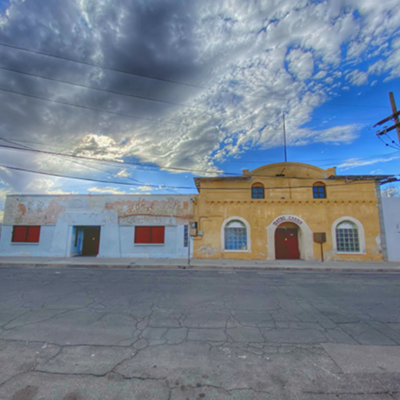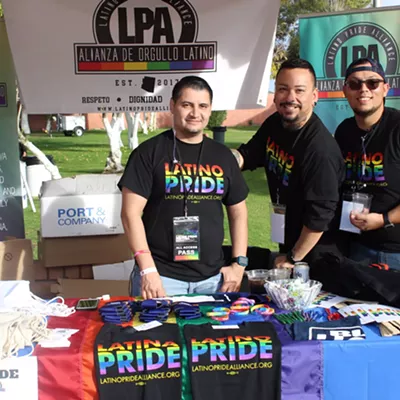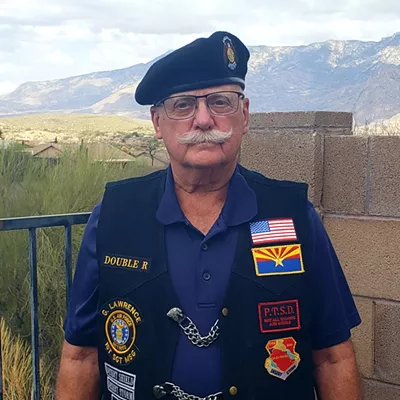In 1909, numerous poor children receiving food items made for a major event on Christmas in Tucson. Fifty years later, teenagers were wondering whether the holiday had become too commercialized—or whether they should wish for a Corvette underneath the tree.
To help impoverished kids, employees of the Arizona Daily Star a century ago contributed funds to purchase candy, mixed nuts, oranges and apples to distribute on Christmas morning.
"There are no other people in all the community," the paper explained, "unless it be those actually engaged in charitable work, who learn of existing poverty as much as the employees of a newspaper."
The response was overwhelming. In a town of about 13,000, the Star reported that hundreds of children showed up, including three brothers who walked all the way from their home west of San Xavier mission to the newspaper's downtown office.
In 1959, high-schoolers were asked by the Star whether the holiday had become overly commercial. One Tucson High student responded: "I think the Christmas spirit has degenerated to an 'all for me and none for you' attitude rather than 'let's all get together.'"
Around the same time, the newspaper quizzed teenagers about what they wanted to find under the Christmas tree. A pink Thunderbird, replied a student, while two others said money. "I'd take a million dollars," one answered.
Some of the other responses were more serious. One teen asked for a college education; another said, "I'd like to get something really good for my parents more than anything."
Special events at schools played a big part in the festivities during both years. At Holladay School in 1909, each of the elementary classes participated in a program which included the recitation, twice, of "Santa Claus and the Mouse," a Christmas Eve poem.
By 1959, the program at Holladay had become A Merry Christmas and Christmas Mary. Meanwhile, Sunnyside High School was presenting The Pageant of Christmas, while the students at Flowing Wells High School were attending a "White Christmas" formal.
Another community tradition a half-century ago: The Tucson Y Men's Club sold Christmas trees, for the 12th year, at six locations; after the holiday, the trees could be disposed of at one of 26 burning sites around town.
Several other nonprofit groups joined the Y in selling Christmas trees. These included the Tucson Boys Chorus, who set up at Swanway Plaza on the city's eastside.
The chorus was also participating in the unveiling of the traditional nativity scene at the Pima County Courthouse downtown. Other musical events included at least two presentations of Handel's Messiah, a jazz ball held by the Old Pueblo Club, and Star of Wonder, put on by the Tucson Woman's Club.
Among the other ongoing traditions in 1959: Marines collected Toys for Tots for the seventh time in Tucson. The goal of the program, in an urban area with almost 250,000 people, was to collect 10,000 "serviceable toys."
The South Tucson Police Department also distributed toys on Christmas morning. They gave away about 1,000 donated items along with 300 bags of candy.
The Christmas lights of Winterhaven were once again lit in 1959, while for the second year, a community-wide Christmas Outdoor Decoration Contest was held.
From a more spiritual perspective, Santa Margarita Church on Grande Avenue was sponsoring the traditional Las Posadas procession.
Fifty years earlier, in 1909, under sunny skies on Christmas day, a baseball doubleheader was played between a local club and the Southern Pacific team from Los Angeles. In 1959, the weather was not as nice; it rained most of the day.
One other Tucson tradition was continuing 50 years ago: For the 10th time, the Pueblo Junior Women's Club sponsored a Mistletoe Ball.
A century ago, the mere availability of mistletoe was celebrated as part of the season. The brisk sale of this holiday staple, along with other items, led to the financial conclusion: "Present indications are to the effect that trade will be lively until the stores close Christmas Eve."
By 1959, even more attention was being paid to December cash-register receipts. To compete with suburban shopping centers, downtown stores remained open until 9 p.m. in December, and it was reported: "This is going to be the merriest Christmas of them all for Tucson retailers."
That same year, because of the enormous volume of Christmas mail, people were asked to deposit their December letters in central collection boxes for pickup.
In 1909, the mail situation was handled differently. Not only would many letters bear 1-cent Christmas stamps sold by the American Red Cross to fight the "white plague" of tuberculosis, but home mail delivery would be made on Christmas Day.
Half a century later, the 35-year continuous streak of Bishop Daniel Gercke saying midnight mass at San Agustin Cathedral was coming to an end. "At my time of life," the 85-year old Gercke declared, "staying up so late is not too good." Instead, he wrote a religious-oriented Christmas editorial for the Tucson Daily Citizen.
In its Dec. 25, 1959, issue, the Star ran an editorial that took a different perspective on the holiday. It made one simple point: "Generosity is the real spirit of Christmas."






